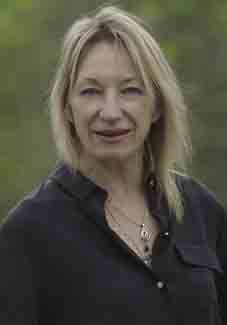
Peg LeVine
While re-watching Schindler’s List before applying to present at USC Shoah Foundation’s upcoming international conference “Memory, Media and Technology: Exploring the Trajectories of Schindler’s List,” Peg LeVine was struck by the numerous examples of “ritual annihilation” perpetrated against the Jews in the film, such as the ransacking of synagogues and homes and the destroying of religious objects.
She was particularly primed to notice because this destruction of ritual during genocide is exactly what she studies – not against Jews during the Holocaust, but in Cambodia during the Pol Pot regime in the 1970s.
LeVine will not only present her research at the conference, she has also been named the first-ever Center Fellow at the USC Shoah Foundation Center for Advanced Genocide Research
As the 2014-15 fellow, LeVine will spend the spring 2015 semester in residence at the USC Shoah Foundation Center for Advanced Genocide Research conducting research and participating in Center activities, and will give a public talk during her stay.
LeVine is Associate Professor at the University of Melbourne School of Global and Population Health. Her research focuses on the “ritual violence” experienced by Cambodians during the Cambodian genocide under the Khmer Rouge regime from 1975-1979. She coined the term “ritualcide” in her book Love and Dread in Cambodia to describe the Khmer Rouge’s disruption of the spiritual and ancestral rituals that guide Cambodian life and traditions, particularly weddings and births. She has found traumatic dread to be associated strongly with loss of access to ritual infrastructure and spirit protection.
“In Cambodia, spirits roam, transform and possess, which stretches the range, metaphysically, of trauma and torture impact. A weakened body becomes ‘susceptible’ to being possessed by vengeful spirits or by spirits that make one ‘go mad’ if there is no ritual protection,” LeVine said.
LeVine’s work also includes clay, wax and bronze sculptures inspired by the stories she heard from Cambodians during her decade spent traveling with them and filming their return to former ritual sites.
“As a trauma and torture specialist who happens to sculpt, even I did not imagine what survivors of the Cambodian genocide would express and gesture when I travelled to remote places with them – places many had not seen, smelled, or touched for 30 years,” LeVine said. “I turned to sculptural forms because words don’t show the visceral, embossed aftermath for those who were forced out of protective Buddhist and animist rituals, and who sense currently the unease in their ancestors.”
During her fellowship, LeVine will look for evidence of ritual tampering, breakdown, and targeted policies across place and time and build relations with scholars who are experts in genocide studies. She also wants to formalize a Wikipedia submission on Ritualcide and review other historical accounts that mention ritual objects, activities, places, and traditional leaders.
She will also take advantage of her proximity to the large Cambodian refugee community in Long Beach, Calif., and Lowell, Mass., to organize consensus groups, in order to study how they tell their history and the rituals they practice while living outside Cambodia.
LeVine will also present an exhibition at the end of the fellowship of new wax, ceramic and bronze sculptures based on the theme “Susceptible.”
The Center for Advanced Genocide Research is an ideal place to further her study of Asian trauma syndromes because most of the trauma research that coincides with truth and reconciliation proceedings, globally, has emerged out of the United States, LeVine said. Spending a semester at USC will also be a homecoming of sorts, as LeVine moved to Australia from the United States over 20 years ago.
“Already my creative and scholarly energy builds,” LeVine said. “To have this chance for reflective time and space, gain access to brilliant and compassionate scholars, [USC Shoah Foundation’s] archives and surrounding communities – to return to my home country for all this – what can I say? I am sure something vibrant, honoring and engaging will come from [the Center’s] gift of funded time and space. “